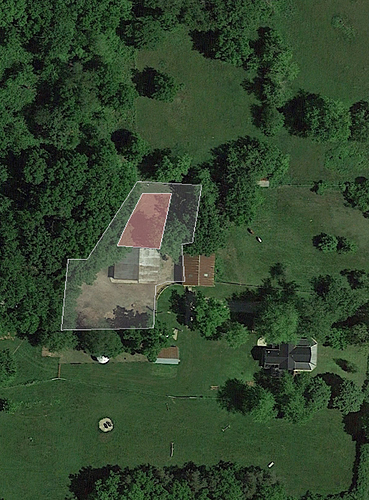I will be getting a laminitic mare on my farm who can never be on grass; drylot only, and no roundbale access like my other horses have.
Within my existing barnyard area, there’s an area about 1/10th acre that I could fence off for her, roughly 65x40’. It’s the red-shaded rectangle in my photo, and the ligher shaded area is my existing barnyard, where I have a roundbale in a Bale barn. The two areas would share a water hydrant, and everyone would have free-access to shelter…
One of my key concerns is that I want to be able to get my tractor from one field to the next without lots of horse wranglling. / gate guarding. This setup accomplishes that. And would let my other horses continue to enjoy their roundbale, but Ms. Fatso can still keep them within sight.
But is 1/10th acre enough space? I’m sure it’s enough for her to canter around a bit if she wants, but no full-out gallops. I could go bigger, but honestly, I suspect that on bare ground she’s not going to have much motivation to constantly move around and graze. I’ll see what toys she likes, if any.
What does COTH think?

